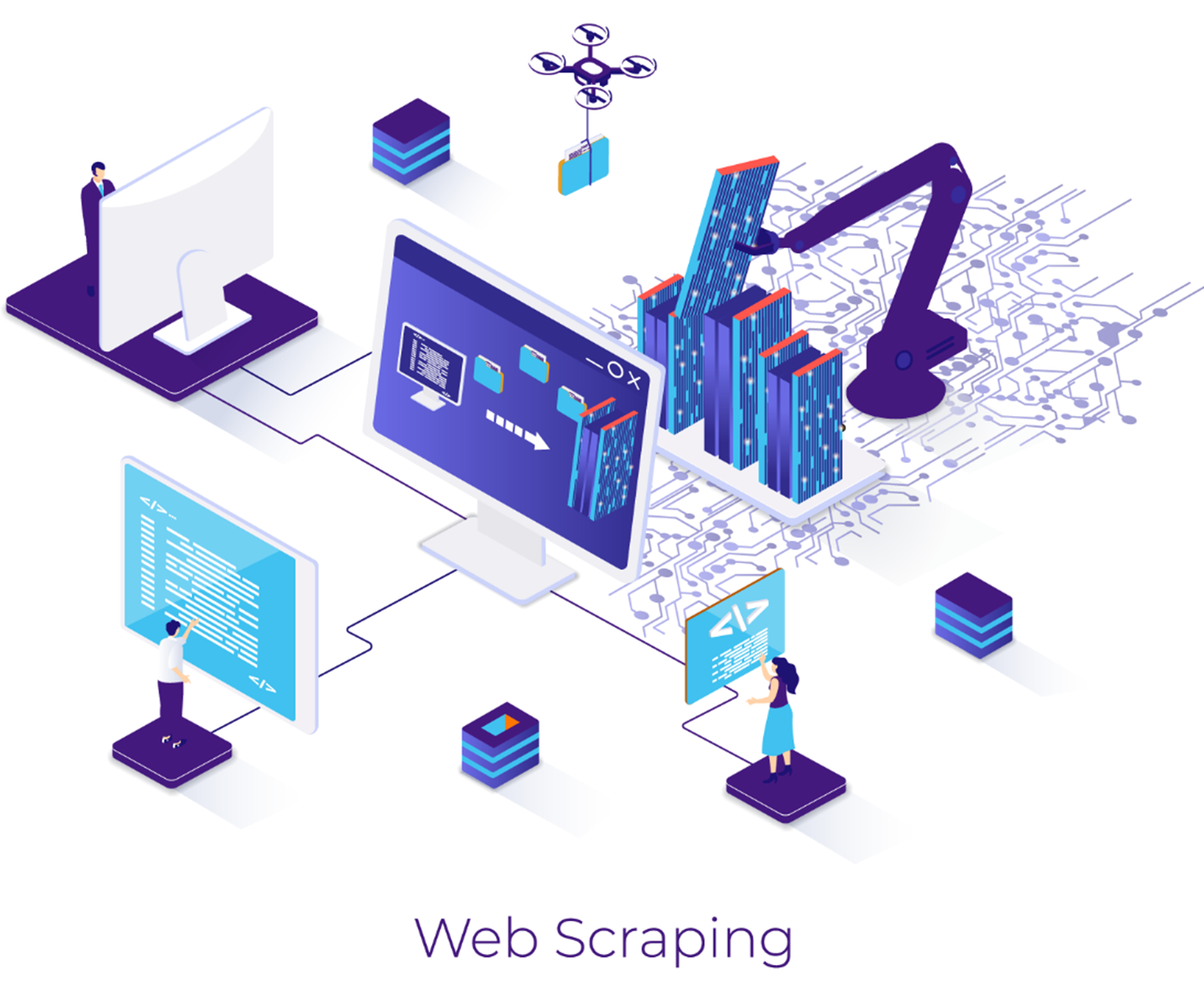
Web scraping is a technique for extracting data from websites, creating databases, gathering market research data, analyzing market trends, monitoring competitor activity and consumer behavior, and finding trends in online conversations.
When it comes to web scraping, it is very important to understand the underlying technologies that are used to collect data from websites, such as Hypertext Markup Language (HTML), JavaScript, and HyperText Transfer Protocol (HTTP).
HTML is a standard language to create web pages, like Extensible Markup Language (XML), which is used to create the sections and structure of a web page. While HTML generates static content, JavaScript is a scripting language used to add functionality and interactivity to web pages. For example, JavaScript makes a web page dynamic, responding to user interactions and loading content on demand. Last but not least is the HTTP protocol used to send and receive data between a web server and a web browser.
Knowing how these technologies work will help to create effective web scrapers and provide insights into how websites are built and find the data that can be collected from them.
Different Types of Web Scraping
There are three types of web scraping, each with different techniques.
Static Scraping
It is used to extract data from websites that don't change very often, such as news websites or blogs. The data is usually in the form of HTML and can be easily extracted using web scraping tools like Beautiful Soup.
Dynamic Scraping
It is used to extract data from websites that change frequently, such as digital commerce websites or social media sites. These websites often use JavaScript to load data when a user interacts with the page. Dynamic scraping can be more complex than static scraping because it requires interacting with the website using a web browser, such as using a headless browser, or a browser automation tool like Selenium or Puppeteer to emulate a user's interaction with the site. Another technique is to understand how the JavaScript code works and parse it instead of the HTML content.
API Scraping
Some websites provide Application Programming Interfaces (APIs) that allow developers to access website data programmatically. In this case, instead of scraping the HTML of the website, you can access the data directly through the API. This type of scraping can be faster and more reliable than web scraping, but it will be restricted to the information exposed by the API, which may differ from what can be viewed in the web interface. Also, some APIs are protected with API Keys or Authorization checks, so you need to understand how the API security works and mimic the behavior.
Best Practices
A few websites follow the robots.txt specification, a standard used to communicate to web robots about which pages or sections of a website should not be crawled or scraped.
Another important best practice is to avoid overloading the website. When we scrape too many pages too quickly, we can overload the website, causing it to crash or lose service. It is important to set a reasonable rate limit for your scraping and to respect the website server resources.
Using a randomized user-agent header is another good best practice. Some websites can detect web scraping by checking the user-agent of the request. Talking about headers, it is important to manage the request and response headers. Some websites also check the header's call sequence or if a specific header is included in the requests.
Common Challenges
Scraping a website is challenging, there are several topics to worry about. The most common challenges are:
Dynamic Content
As we mentioned earlier in the Dynamic Scraping section, some websites use JavaScript to dynamically load content, making it difficult to extract data. Tools like Selenium, Puppeteer, and headless browsers can help extract the information after the page is loaded, but this will require the download of resources that may not be needed, such as images, Scripts, and CSS files. This can increase the time to scrape the website and the amount of network traffic.
Inconsistent Data Format
Some websites do not render the pages with a consistent data format, causing errors in the web robot . There are a few techniques to handle this issue, like different parsers for specific parts of the page or regular expressions.
Website Structure Changes
Probably the most popular web scraping challenge. Any small change in the website structure can break the scraping robot. This is something we have no control over, and we need to create scraping robots to handle failures trying to find or parse a specific section of a website. This error handling should identify the missing section and try to collect information to identify the problem.
Web Scraping: Ethical Considerations and Legal Issues
It is important to respect the terms of use of the website you are scraping. Some sites restrict or do not allow scraping, and violating these rules can result in legal implications. Be transparent about your intentions when accessing confidential or sensitive information and ensure to responsibly handle and use these types of data.
It is also important to be aware of the laws and regulations that apply in your country and the country where the website you are scraping is located. Some countries or regions have specific regulations, such as the "General Data Protection Regulation" (GDPR) in the European Union and the "Computer Fraud and Abuse Act" (CFAA) in the United States, which must be considered when processing personal or sensitive data.
Acknowledgment
This article was written by Paulo Roberto Sigrist Junior, Systems Architect and Innovation Expert at Encora. Thanks to Andre Scandaroli and João Caleffi for their reviews and insights.
About Encora
Fast-growing tech companies partner with Encora to outsource product development and drive growth. Contact us to learn more about our software engineering capabilities.


